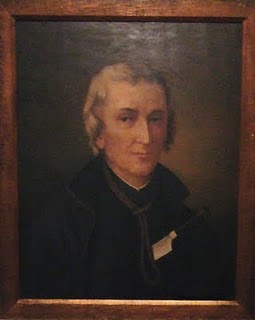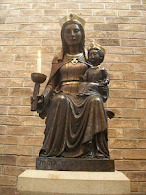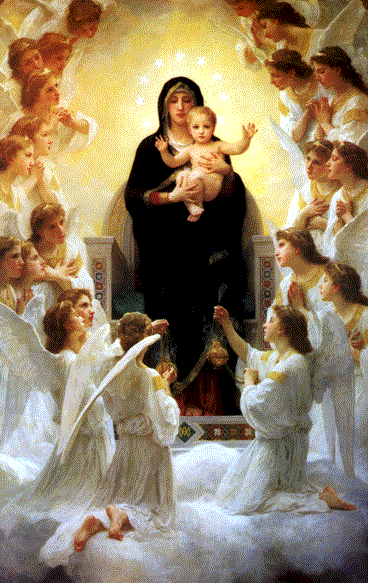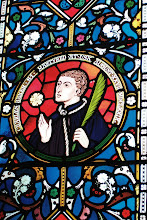
Oliver Plunkett was born in Loughcrew, County Meath, Ireland in 1629 to well-to-do parents. Desiring to become a priest, he set out for Rome in 1645. In 1646, he was admitted to the Irish College in Rome.
In 1654 Oliver Plunkett was ordained a priest and delegated by the Irish Bishops to act as their representative in Rome. Because of the extremely strict Penal Laws in force in Ireland at that time, it was many years before Fr Plunkett could return to his homeland. He served as theological professor at the College of Propaganda Fide and there, on 9th July 1669, he was appointed Archbishop of Armagh and was consecrated on 30th November at Ghent by the Bishop of Ghent, assisted by two Bishops, including the Bishop of Ferns.
The Restoration of the Monarchy in 1660 brought King Charles II to the throne and the new King wished to rule with tolerance for all his subjects. So, in March 1670, the Archbishop finally returned to Ireland. He received the pallium on 28th July 1670. Now that he was home, Archbishop Plunkett began the reorganising of the ravaged Catholic Church. He built schools both for the young and for the clergy and, in 1670, he established a Jesuit College in Drogheda. The Archbishop refused to sign the Test Act of 1673 and the college was razed to the ground and Plunkett went into hiding, travelling about in disguise.
In 1678, things became even worse for Catholics, particularly for Catholic priests! In England, the foul Titus Oates had concocted the fictitious Popish Plot and anti-Catholic hysteria was sweeping the country. Despite having a price on his head, Archbishop Plunkett refused to abandon his flock. He was arrested in Dublin in December 1679 and imprisoned in Dublin Castle. He was tried at Dundalk for conspiring against the state but this was unproven. The powerful and extremely anti-Catholic Lord Shaftsbury feared that Oliver Plunkett would never be convicted in Ireland so he had him moved to Newgate Prison in London. Even though the first grand jury found no true bill, the Archbishop was not released. At the second trial, which was claimed to be a kangaroo court, he was, as expected, found guilty of High Treason “for promoting the Roman faith” and he was condemned to be hanged, drawn and quartered.
On 1st July 1681, Oliver Plunkett, Archbishop of Armagh and Primate of all Ireland, was hanged, drawn and quartered at Tyburn. Originally, his body was buried in two tin boxes. Exhumed in 1683, his remains were moved to various places before finally coming to rest at Drogheda, Ireland (his head), Downside Abbey, England, and Lamspringe, Germany.
Archbishop Oliver Plunkett was beatified in 1920 and canonised in 1975. St Oliver Plunkett was the last Catholic Martyr to be executed in England.
In 1654 Oliver Plunkett was ordained a priest and delegated by the Irish Bishops to act as their representative in Rome. Because of the extremely strict Penal Laws in force in Ireland at that time, it was many years before Fr Plunkett could return to his homeland. He served as theological professor at the College of Propaganda Fide and there, on 9th July 1669, he was appointed Archbishop of Armagh and was consecrated on 30th November at Ghent by the Bishop of Ghent, assisted by two Bishops, including the Bishop of Ferns.
The Restoration of the Monarchy in 1660 brought King Charles II to the throne and the new King wished to rule with tolerance for all his subjects. So, in March 1670, the Archbishop finally returned to Ireland. He received the pallium on 28th July 1670. Now that he was home, Archbishop Plunkett began the reorganising of the ravaged Catholic Church. He built schools both for the young and for the clergy and, in 1670, he established a Jesuit College in Drogheda. The Archbishop refused to sign the Test Act of 1673 and the college was razed to the ground and Plunkett went into hiding, travelling about in disguise.
In 1678, things became even worse for Catholics, particularly for Catholic priests! In England, the foul Titus Oates had concocted the fictitious Popish Plot and anti-Catholic hysteria was sweeping the country. Despite having a price on his head, Archbishop Plunkett refused to abandon his flock. He was arrested in Dublin in December 1679 and imprisoned in Dublin Castle. He was tried at Dundalk for conspiring against the state but this was unproven. The powerful and extremely anti-Catholic Lord Shaftsbury feared that Oliver Plunkett would never be convicted in Ireland so he had him moved to Newgate Prison in London. Even though the first grand jury found no true bill, the Archbishop was not released. At the second trial, which was claimed to be a kangaroo court, he was, as expected, found guilty of High Treason “for promoting the Roman faith” and he was condemned to be hanged, drawn and quartered.
On 1st July 1681, Oliver Plunkett, Archbishop of Armagh and Primate of all Ireland, was hanged, drawn and quartered at Tyburn. Originally, his body was buried in two tin boxes. Exhumed in 1683, his remains were moved to various places before finally coming to rest at Drogheda, Ireland (his head), Downside Abbey, England, and Lamspringe, Germany.
Archbishop Oliver Plunkett was beatified in 1920 and canonised in 1975. St Oliver Plunkett was the last Catholic Martyr to be executed in England.
LINKS TO THIS POST:








.JPG)

.JPG)






Thank you for this lovely post!
ReplyDeleteAs a small child I remember being taken to Drogheda and seing the then Blessed Oliver Plunketts head. That was the first time I learned about the martyrs.
And thank you for visiting my blog, happy St Patricks day to you also!
I still call him Blessed Oliver Plunkett - I can't get used to saying 'Saint'!
ReplyDeleteHappy St. Patrick's Day!
Happy St Patrick's Day to you and your family.
ReplyDeleteMay God bless you all always.
A special Happy St. Patrick's Day to you! This video is so beautiful! Thank you for sharing it--and thank you also for the information on Oliver Plunkett.
ReplyDeleteThanks also for your greeting. Yes, we will be celebrating--probably in a variety of ways. At work we have Lenten prayers in the main corridor every Wednesday--and today we are having a special treat afterwards in the staff room. At our convent the four of us are celebrating St. Patrick's Day with a special dinner prepared by Sr. Mary who is actually from Ireland. There are only four of us in this convent and we are quite a mixture! I'm of Irish descent, Sr. Marcus is of German descent, and Sr. Anita of Italian descent. Sort of a mini- United Nations!
Happy St Patrick's Day to you! It's interesting to hear about another famous Irish Saint today too!
ReplyDeleteHi Breadgirl!
ReplyDeleteThanks for posting this. What a good idea! And enlightening for me: for some reason I thought he was around at the same time as his polar opposite and namesake, Cromwell. Maybe it was the connection with Drogheda. Anyway, shame on me, considering one of my boys shares his name too!
God bless and thanks for your lovely comments.
Happy St. Patrick's Day to you!!!!
ReplyDeleteThe beauty of the Irish Blessing video is in sharp contrast to the story of persecution and death that awaited the martyrs in Ireland. Such a turbulent history!
ReplyDeleteBy the way, the Irish at the beginning of the music video means " Lord have mercy, Christ have mercy". It's beautiful, thank you again.
ReplyDeleteThis beautifully peaceful blessing was such a treat to wake up to this morning! And thank you for for sharing with us the story of Oliver Plunkett.
ReplyDeleteMay the blessing of the Almighty be with you today and always.
Hello friends
ReplyDeleteThank you all for your very welcome comments. I appreciate them very much. I hope you don't mind if I don't answer each one individually. I am even more rushed than usual and I may not be around for a couple of weeks. At present, there are about seven members of my close family, including two brothers and a sister, who are seriously ill. So I am going to see them all and I will be away for about two or three weeks. So, don't you all forget about THE LAST WELSH MARTYR! I will be back soon, please God. I would appreciate a prayer or two from you for my family. Thank you all and God bless you.
Truly a very inspirational story. I love to read on how this courageous men came to be saints.
ReplyDelete